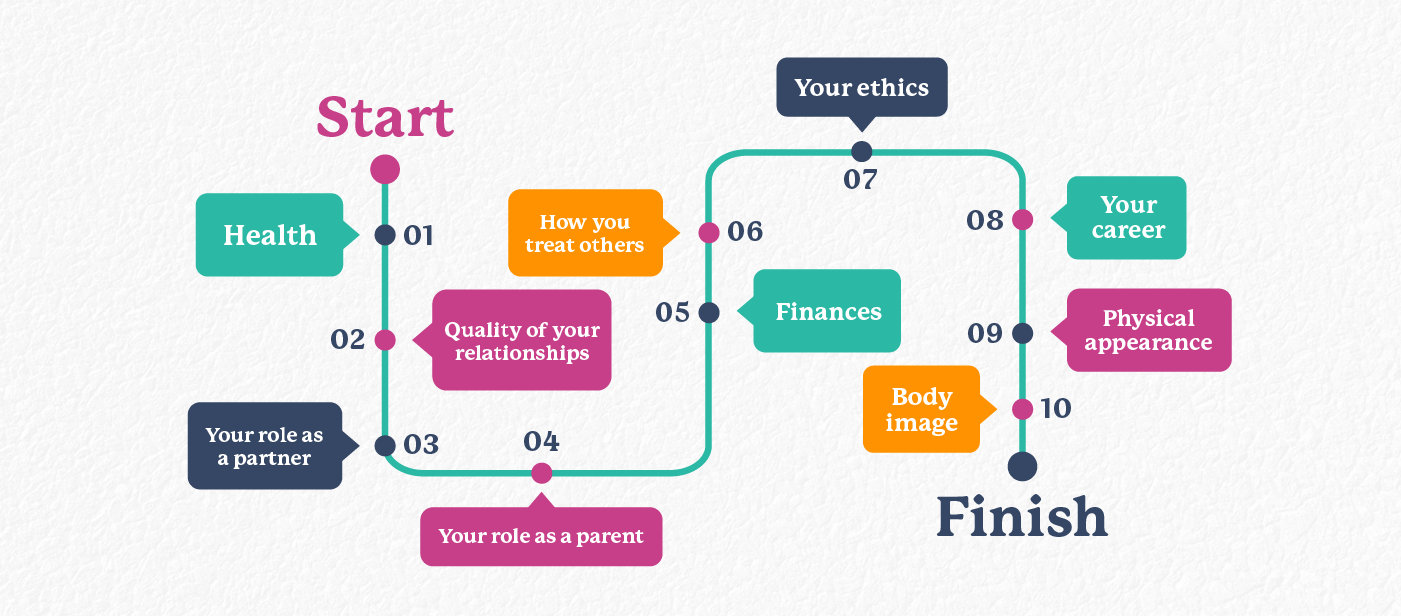6 Steps to Boost Your Self-Esteem and Feel Better About Yourself
Self-esteem is a cornerstone of mental well-being, yet 85% of people worldwide struggle with it. But how do we develop self-esteem? And more importantly, how can we improve it at different stages of life? Here are six practical steps to enhance self-esteem and regain confidence in yourself.

- Embrace the Right to Feel Good About Yourself
Feeling good about yourself should be a fundamental human right, like having a roof over your head or access to safe environments. Yet, from a young age, we’re often taught to earn self-worth based on actions or achievements. Break this cycle by reminding yourself that you deserve to feel good just for being you.
- Build a Self-Esteem Blueprint (Schema)
Your self-esteem is shaped by various areas of life—health, relationships, career, finances, and body image, to name a few. Create a “self-esteem schema” by listing the areas that matter most to you. Then, rate each one as meets expectations, above expectations, or below expectations. This visual blueprint helps you identify strengths and areas for improvement.

- Stop Disqualifying the Positive
Many people minimize their achievements or virtues, such as kindness or resilience, because they feel these qualities are “expected” or “not a big deal.” If you frequently downplay the good things about yourself, you’re disqualifying the positive. Instead, celebrate your small or big wins and recognize their value in shaping your self-esteem.
- Reassess Unrealistic Expectations
Sometimes, low self-esteem stems from setting impossibly high expectations for ourselves. For instance, striving for unattainable fitness goals or financial milestones can lead to disappointment. Reevaluate your goals to ensure they align with your current resources and capabilities. High standards are great, but they should also be realistic and achievable.
- Balance the Factors That Shape Your Self-Esteem
Think of your self-esteem as a pie chart, with each slice representing factors that influence how you feel about yourself. Is your chart balanced? Or are some factors—like appearance or career—overrepresented while others are neglected? Adjust your “pie” to give equal weight to meaningful aspects of your life, including the right to feel good just because you exist.
- Avoid All-or-Nothing Thinking
Self-esteem isn’t about perfection. It’s about recognizing both your strengths and areas for improvement. Instead of thinking, “I’m a failure because I don’t like my body,” focus on the progress you’ve made and the traits you value about yourself. Celebrate incremental wins while working toward your goals.
A Quick Recap
- Feel good about yourself as a basic human right.
- Create a self-esteem schema to identify areas of strength and growth.
- Stop disqualifying your positive traits or achievements.
- Reassess unrealistic expectations that harm your self-worth.
- Balance the factors influencing your self-esteem.
- Avoid all-or-nothing thinking—embrace the good along with the challenges.
Improving self-esteem takes time and effort, but these steps can guide you toward a healthier, more balanced sense of self-worth.
Discover more insights on improving self-esteem by watching the full video.
Contact Sullivan + Associates Clinical Psychology
If you’re ready to improve your self-esteem or have any questions, contact Sullivan + Associates Clinical Psychology. We’re here to help!